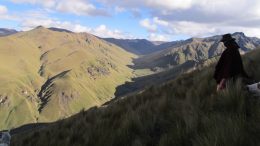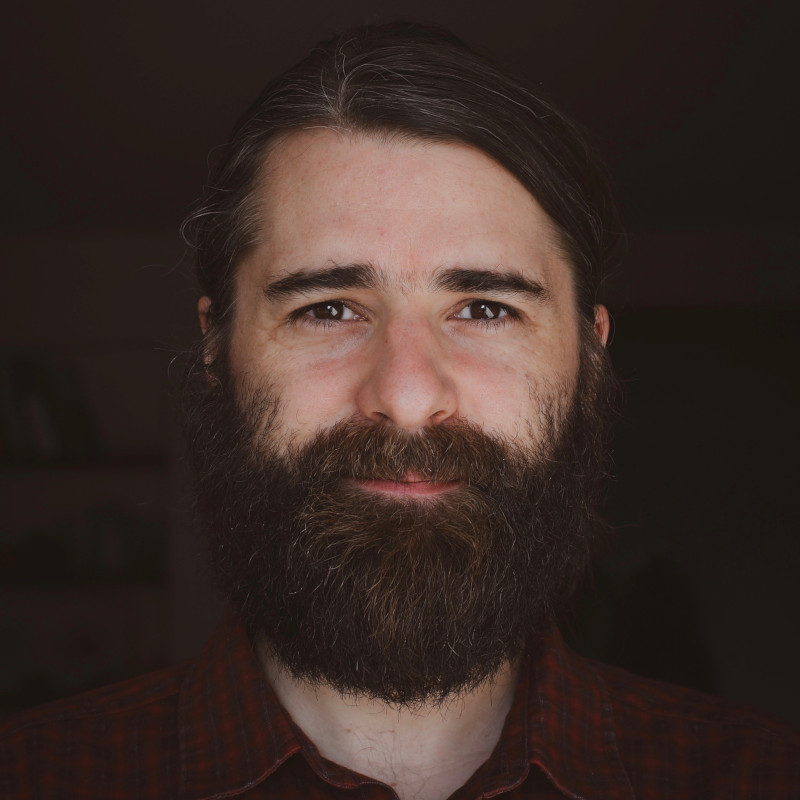Jumandy Allauca, a resident in Ecuador’s Cotopaxi province, was 13 years old when I first met him. It was 2011 and he was participating in a day of collective work with other members of his community — performing maintenance work on a pipeline that carries irrigation water from high altitude wetlands down to their village, some 20 kilometers away. He and I had hiked up together, following the family donkey, Pepito, who was laden with a sack of sand and a pair of shovels.
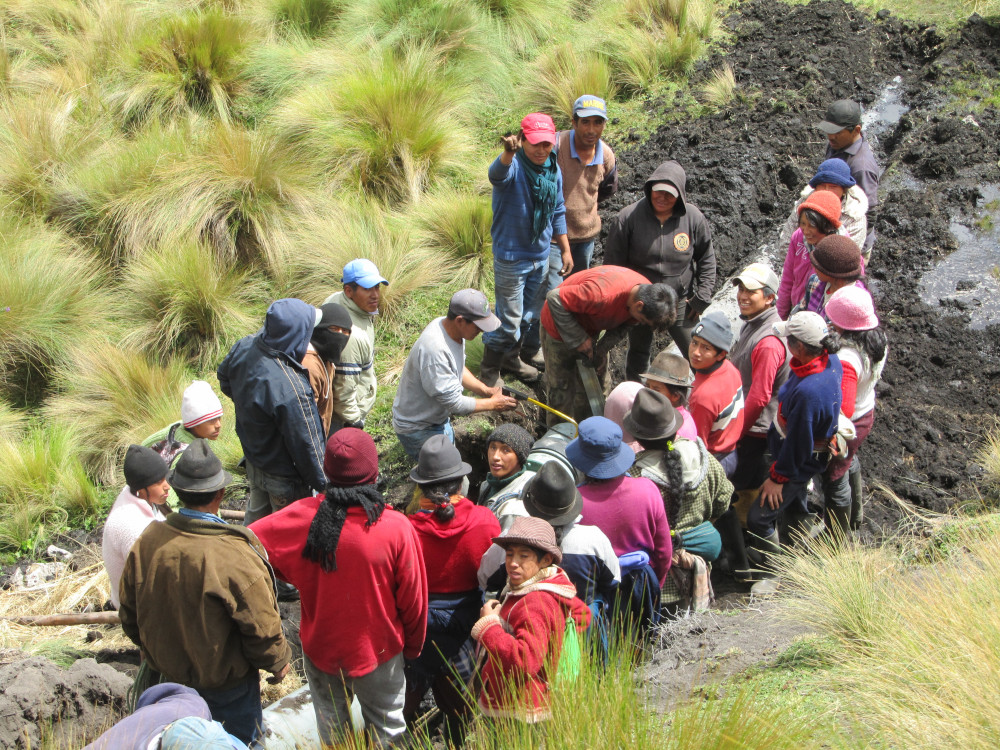
“We have to do this work,” Jumandy told me. “The water here is for everybody.”
This was partway through the 15 months I spent living in the region to find out more about Indigenous politics and environmental activism. I returned in 2018 and had scheduled another visit to reconnect with friends there in 2020, but COVID-19 put an end to such plans. Instead, we have been spending more time talking via WhatsApp, Zoom and other online platforms.
The páramo always features in our conversations.
The Andean páramo moorlands are home to high-altitude lakes, countless mountain streams, and a host of unique plants and wildlife.
They’re also uniquely at risk in ways that threaten millions of people, if not the entire climate.
Efforts to protect the páramo overlap with Indigenous struggles for recognition and environmental justice. Local leaders know that the future of all these actions depend on one group in particular: young people.
As I first learned a decade ago, preserving the páramo ecosystem and sustaining its role in hydrological cycles is vital for ensuring that water continues to flow through the community irrigation pipeline, a project operative since 2009. Such work remains particularly important now, when the páramo faces increasing threats from industrialization and climate change.
I’m frequently told how jóvenes (young people) play a key role in this work.
Reflecting on his experiences in the páramo, earlier this month Jumandy told me, “We need the young people to be well trained,” and repeating the word concientizar, perhaps best translated from Spanish as “to raise awareness.”
Jumandy added, “We need to raise the awareness of young people — and of their parents too — so that everyone understands the importance of the páramo, so that everyone, including young people, plays an active part in these processes.”
In our recent conversations, local leaders have expressed an acute awareness of the need to keep young people engaged and active. Youth participation is essential to ensure that páramo conservation efforts continue — and this is something that has benefits for people not only across the Andes but also around the world.
The Páramo
An ecosystem unique to the Andes, the páramo moorlands are located mainly in Ecuador and Colombia, along with areas of Peru and Venezuela. This discontinuous belt of land covers roughly 36,000 square kilometers and represents a kind of high-altitude island archipelago. Found between 3,200 and 4,500 meters above sea level, these tropical alpine wetlands occupy a zone that typically lies above the agricultural frontier and upper tree line, reaching up to border areas of perennial snow.
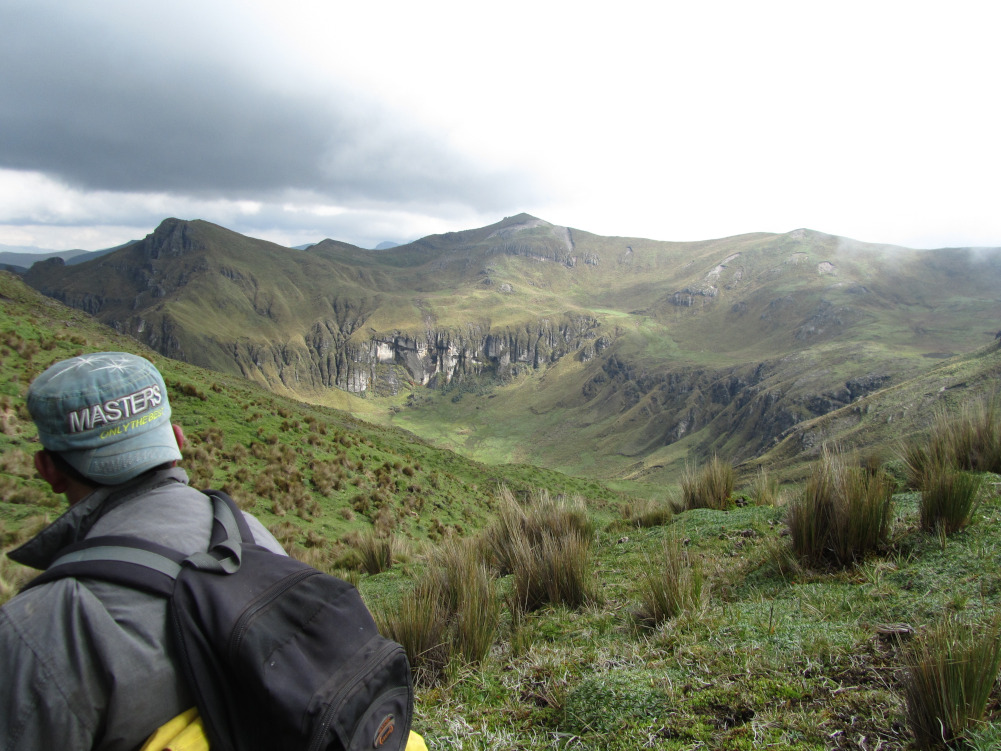
The abundant flora and fauna found in the páramo make it the world’s most diverse high-altitude ecosystem. Even though weather conditions are harsh — varying from heavy rain and occasional snow to long daytime periods of intense sunshine — the páramo is home to an estimated 5,000 species, 3,000 of which are found nowhere else on the planet, including hummingbirds like the Ecuadorian hillstar and Buffy helmetcrest.
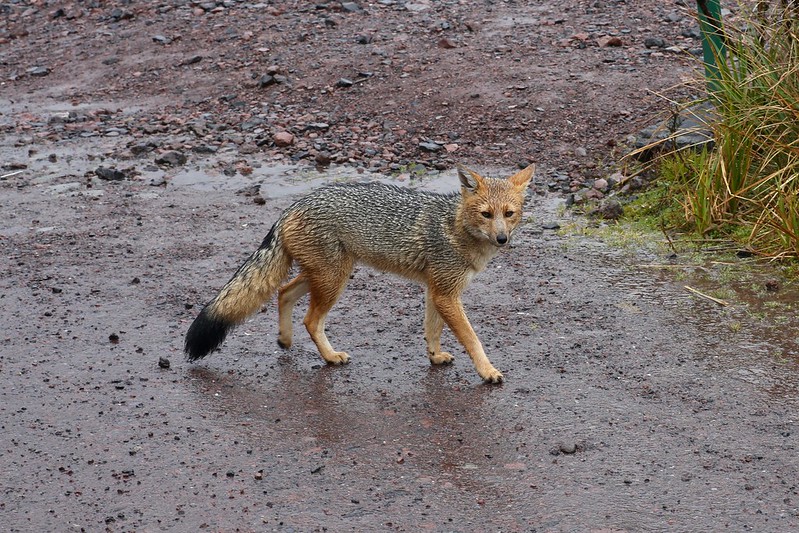
The particular soil systems and vegetation of the páramo mean it functions like a giant sponge in the hydrological cycle. Mosses and grasses absorb rainfall that is then stored in the soil before being slowly released into streams and rivers. Researchers analyzing these processes estimate that water supplies for 40 million people across the Andes depend directly on the páramo.
The wider world also benefits from a healthy páramo because its soils act as a carbon sink, helping to limit global heating. The páramo, like other lands in tropical alpine regions, stores carbon through a combination of its particular vegetation, low air temperature and atmospheric pressure, and soils that are frequently water-logged.
Today, however, the páramos themselves face rising temperatures and reduced precipitation, threatening their diverse flora and hydrological benefits.
Land-use change presents another range of grave threats. Recent modeling projects that by 2060, páramo areas will be reduced by 30% — its unique web of life being chipped away by cattle grazing, commercial pine forests and farming as a result of the upward expansion of agricultural frontiers — a process that’s already begun.
At the same time, many communities who live and work in close relation with the páramo are very much aware of these threats and are taking proactive steps to alleviate them.
Learning From Experience
As a young teenager, Myriam Allauca was a regular participant in activities organized by and for her community’s youth group. In Pujilí parish, in the heart of Cotopaxi’s highlands, the group would meet regularly and undertake endeavors such as learning to identify local species of trees and flowering plants or traveling as a group to visit a nature reserve in the lowland cantón of La Mana. At other times, they would collaborate with community leaders to join projects that were already underway, such as helping to build two thatched-roof huts for use by occasional conservation workers in the páramo.
By her late teens Myriam had taken on a leadership role in the group, at one point running a project to map the boundaries of the whole area of páramo owned by her community.
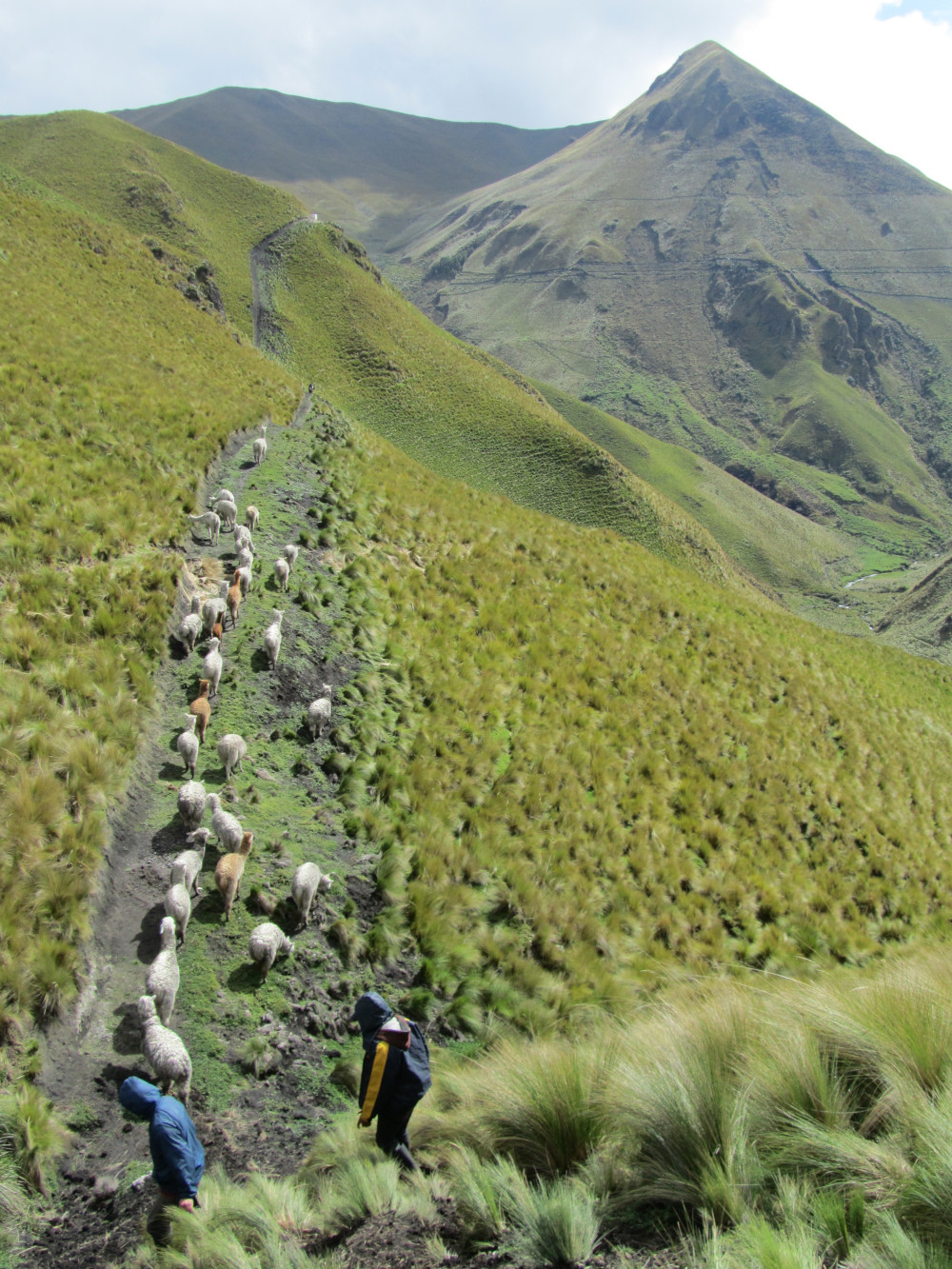
These were clearly formative experiences. By her mid-twenties, Myriam had been elected by the community to be their vice president.
“What we learn when we are young is so important,” Myriam tells me. “Our experiences at that age shape what it is we want to do, what we want to commit to, later in life.”
I suggest her own life illustrates that point very clearly. Now with two young children of her own, Myriam works as a local development partnerships facilitator for SwissAid — an international development NGO from Switzerland with a long history of working in Ecuador, although it plans to end operations there later this year.
Our conversation took place a few weeks after Myriam’s own community, San Isidro, secured a landmark victory — many years in the making — that helps pave the way for further páramo conservation efforts nationwide. At the end of November 2020 the national Ministry for Water recognized the area of páramo held communally by San Isidro as a “protected hydrological area” — one of the first in the country.
Land with this protected status still belongs to the community (rather than to the state) but is subject to stricter regulations that limit how the land can be used. Any activities that could alter the quantity or quality of local water supplies, for example, are prohibited. Achieving this status, Myriam says, was the result of decades of community organizing and campaigning, in addition to extensive on-the-ground research in the preparation of scientific reports.
Jóvenes played a key role helping to secure this protection for the San Isidro páramo, says Tannia Rojas, who also grew up in San Isidro and now works as a regional facilitator with SwissAid.
“Young people were super important in that process — things progressed much faster in San Isidro [than in other communities] due to all the information we had gathered,” she says. “We had a land-management plan, a water-protection plan; we had measured flow-rates of the different streams, documented the flora and fauna by taking photographs. And all that fieldwork, led by our council members, was made possible through the participation of young people.”
That participation enabled data gathering on a scale not seen before in the community. For example, the 73-page water-protection plan included photographs, hand-drawn topographical maps and updated flow-rate measurements for 17 páramo streams taken at 3,600 to 4,399 meters above sea level — and all of this information was gathered with assistance from young people. In part, this is because of the significant time and human energy requirements involved in such work — entire days spent hiking at high altitude, often encountering heavy rainfall while equipped with minimal, if any, waterproof gear. The final “protected area” report submitted to regional authorities was similarly detailed, including 25 maps that incorporate community-collected data.
Young people have also helped connect events in San Isidro with parallel efforts elsewhere in the region, sharing updates with other communities and members of the Indigenous Movement, and amplifying their own community’s achievements through social and legacy media. All of this has raised the profile of páramo protection. Even though the community faces ongoing legal threats from parties trying to seize ownership of the páramo for their own commercial ends, council members in San Isidro, including the current president, Porfirio Allauca, now receive calls from other communities asking their advice on how to achieve the same protective recognition.
Historic Struggles
In different parts of the country, communities have developed different strategies for páramo protection. Further south in Ecuador, in Azuay province, environmental activists from the People’s Council for Cuenca’s Water and allied groups successfully campaigned for a referendum to let city residents vote on whether to allow mining in the area — including in the Quimsacocha páramo. The “Yes” campaign in favor of banning mining scored a resounding victory in the vote, which was held on the same day as Ecuador’s first-round presidential election in February.
Since the referendum was approved by Ecuador’s Constitutional Court, a lawyer from the campaign told media that he received many calls from communities elsewhere in Ecuador interested in protecting the páramo and preventing mining.
Making sure these diverse campaigns have a future is something that Patricio Copara addresses daily. As director of youth work and culture with Ecuarunari, an Indigenous organizing body, Patricio works with communities and youth groups across Ecuador’s highlands. Visiting different provinces, he sees communities with widely varying experiences of campaigning and activism, some much more successful than others.
But a common theme cuts across them all: trying to ensure that the next generation are engaged.
“This last year, with the pandemic, has been very difficult,” he tells me. “We had to cancel so much of our program. We haven’t been able to mobilize as normal.”
They’re still active, though. In several provinces, they’ve helped communities set up “young leaders’ training schools.” In addition to providing young people with current information on Indigenous Movement actions, a core goal here is to connect different communities with agencies operating at the national level offering financial and legal support, depending on those communities’ particular needs.
“In any place, you find some young people who are not committed, or not working,” he says. “So we’re creating these [schools] as spaces to explore alternatives, to work on the things that people care about.”
For Patricio, successful activism is not only about fighting to defend the páramo and other Indigenous territories, although he dedicates much of his time to supporting people doing just that. Nor is it only about looking ahead and working collectively to create a viable, desirable future for the current generation’s children and grandchildren. He emphasizes that all his work, at home and with Ecuarunari, is part of a “historical struggle” and that must remain central to conservation efforts.
“We need to move forward valuing the struggle of our ancestors, our grandparents,” he told me recently. “We should never forget that our grandparents lived practically as slaves” — as bound laborers under the hacienda system. “They sacrificed, and so did our parents, and that work is reflected in the Indigenous Movement, in our struggle today. We cannot forget the past, and it is the youth who need to be aware and do that work of remembering.”
The páramo in San Isidro forms a central part of this kind of community commemoration. The hills are recognized as both a site of historical importance and as a symbol of solidarity. To mark the inauguration of the irrigation water pipeline, just over ten years ago, community leaders laid a plaque at the base of a flagpole beside two thatched-roof huts built by Myriam Allauca and her colleagues. The plaque thanks recent ancestors for their efforts in acquiring this land — the result of a long struggle following Land Reform in the 1960s and 1970s — and restates how the páramo is both a site of and a source of communal action. After listing the people who fought to secure this land for the community, the text describes the páramo as a “wellspring of life” that those alive today pledge to “look after forever and ever.”

Tannia Rojas hopes people everywhere will take this message to heart, especially young people who, she says, “are fundamental to the conservation process.” Protecting recent gains — which are always under threat, especially within judicial systems that have a history of discrimination against Indigenous people — is the responsibility of everyone, she says. “We need young people to sustain the achievements we have made, but some of them don’t realize the importance of the páramo — they think water just comes out of the tap! So our efforts continue, to involve them in political, environmental and community work.”
Páramo preservation, Tannia adds, is most successful when everyone in a community is connected to the work being done. And keeping those connections alive is something that everyone can contribute to.
“We have to ask, what kind of leaders do we want in the future? Then, we have to train young people well — by being good examples for them to follow.”
Given the global need to care for the ecosystems that sustain us — and to keep that work going well into the future — this collective approach sets a good example for all of us.
The opinions expressed above are those of the author and do not necessarily reflect those of The Revelator, the Center for Biological Diversity or their employees.
![]()

